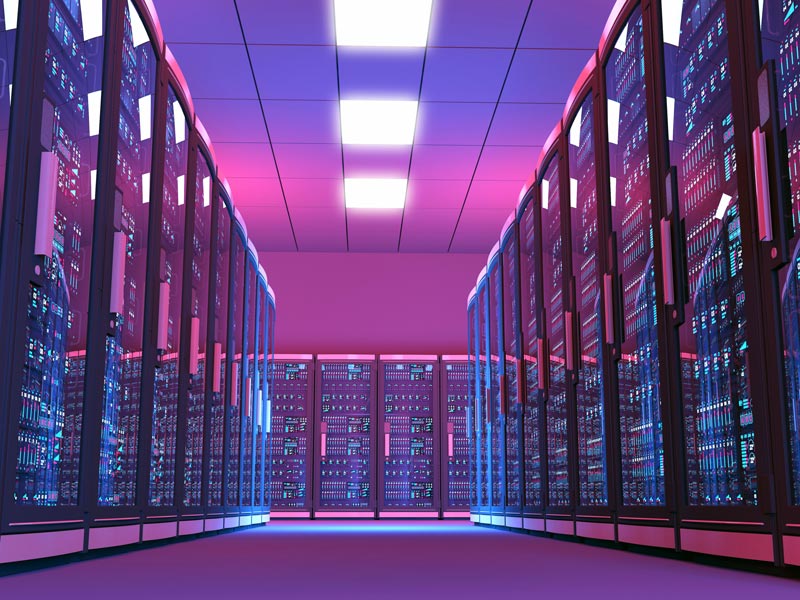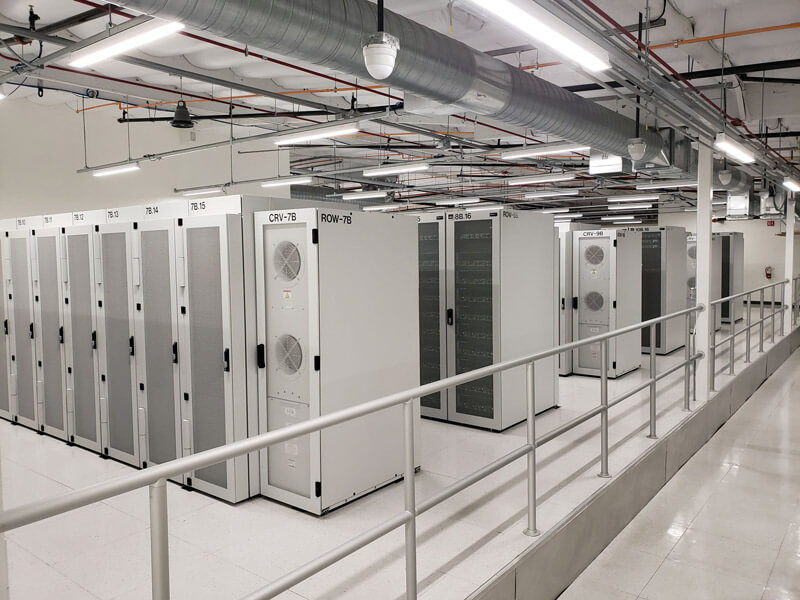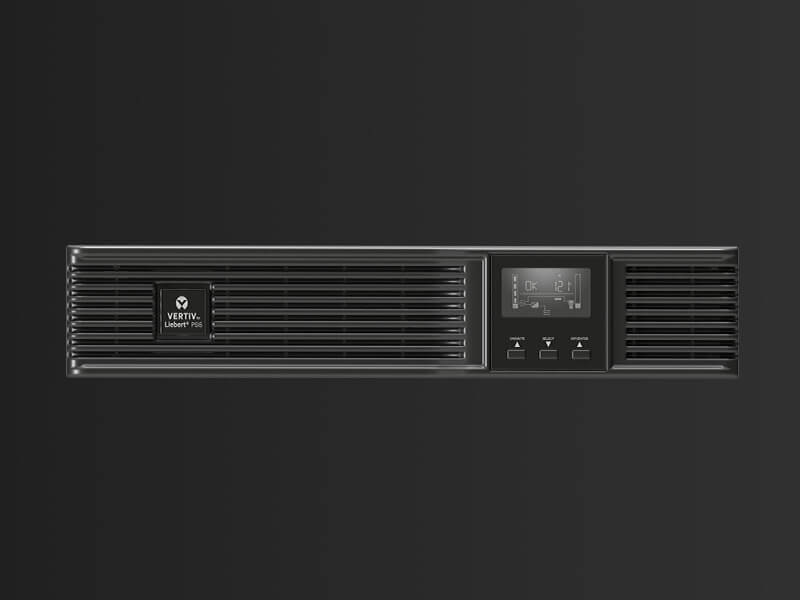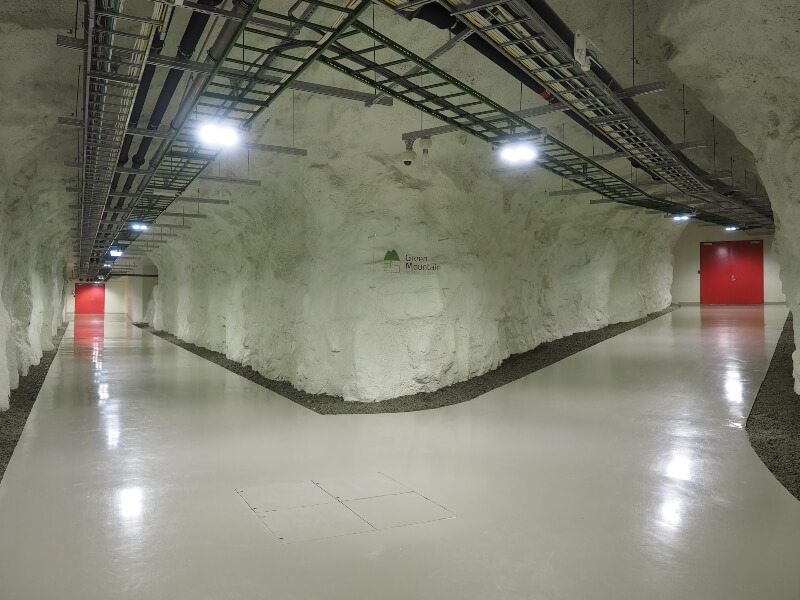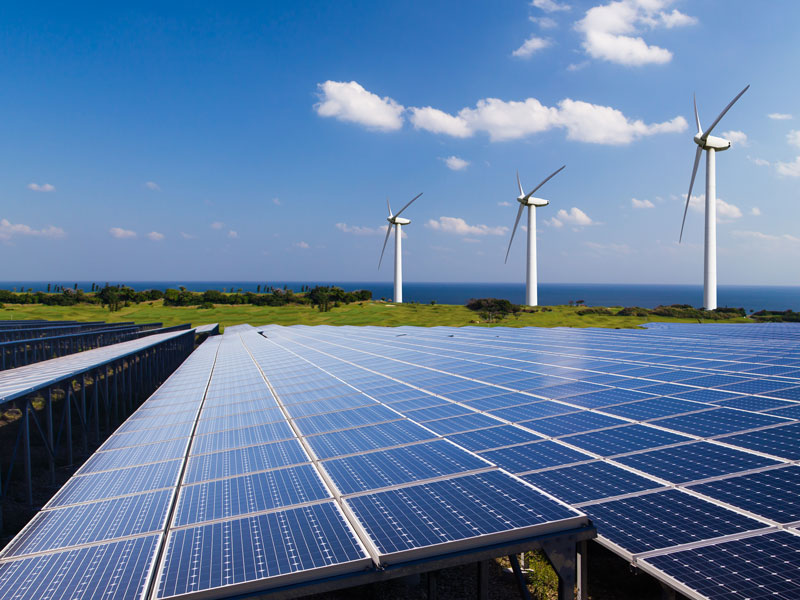
Taking First Steps to Reduce Environmental Impact
The journey starts with the first steps and those steps may include setting goals for your organization and evaluating and prioritizing the opportunities that exist to reduce your environmental impact.
Establishing Goals
It can be helpful to align your plans for reducing emissions and resource consumption around specific goals. These goals may include decreasing the data center’s carbon footprint, power consumption, and water use, as well as optimizing supply chain operations and reducing e-waste.
Some data center operators are adopting goals based on the vision of the “net zero” data center or some of the pillars that comprise that vision. In broad terms, the net zero data center encompasses:
- Zero losses: Eliminating inefficiencies and maximizing utilization in data center systems
- Zero carbon: Eliminating carbon emissions from the power consumed by data centers
- Zero water: Eliminating the dependence on water for data center operation
- Zero waste: Eliminating the e-waste created by data center operations
Defining Frameworks and Metrics
There are a number of frameworks and metrics to choose from when defining measurable goals. A more thorough review of frameworks and metrics is included in the section on Measuring and Reporting Data Center Efficiency and Emissions.
In many cases, emissions will be the primary target of efforts to reduce environmental impact. The Greenhouse Gas (GHG) Protocol provides comprehensive, standardized global frameworks that industry organizations can use to understand, aggregate, quantify, and reduce their emissions and work with value chain partners to do the same. According to GHG Protocol, these emissions include:
Scope 1: Emissions from owned and operated assets. That would include emissions from data center facilities, IT, and other equipment, as well as emissions from other assets such as company cars and trucks. It also includes emissions from construction methods and material choices used to fabricate such facilities.
Scope 2: Emissions from the generation of purchased energy. With utilities still limited in their ability to directly meet the data center industry’s power demands with carbon-free energy, operators are using tools such as power purchase agreements to offset the carbon emissions from purchased energy.
Scope 3: Emissions from everything else (suppliers, distributors, product use, and more). These emissions are more difficult to measure as they encompass third-party actions and assets. Colocation and cloud providers may be asked to report on emissions to their customers as part of Stage 3 emission calculations and can create competitive advantage with reporting that supports their customers’ sustainability goals.
GHG Protocol also provides calculators and FAQs to help organizations quantify emissions.
Prioritizing Opportunities
Data center organizations that have taken a leadership role in reducing their environmental impact have taken a multi-tiered and phased approach to the challenge. This could begin with an evaluation of existing data center systems and prioritization of the opportunities based on the goals and current technologies.
Many organizations have already addressed the low hanging fruit that contributed to inefficiencies in data center operations by virtualizing servers, using hot-aisle or cold-aisle containment, and adopting free cooling. As they build on those actions, operators should continue to prioritize solutions that can achieve desired levels of continuity to protect the services users depend on. Here are some of the opportunities that should be considered:
Data centers struggle with underutilized assets due to overprovisioning based on infrequently experienced peak demands and the need for redundancy in critical systems. Adopting cloud services and turning off “zombie” or little-used servers can boost utilization rates in IT systems. Selecting power equipment that can operate at rated capacity, leveraging the UPS system’s overload capacity in handling demand peaks, and adopting a high-utilization N+ 1 power system architecture can drive higher utilization of critical power system equipment.
The most common metric used to assess data center efficiency is power usage effectiveness (PUE), PUE is calculated by dividing the amount of power entering the data center by the amount used to support the IT load. The goal is to get as close to a 1:1 ratio as possible. Worldwide, the average data center PUE was 1.57 in 2021 according to the Uptime Institute’s Annual Data Center Survey. With highly efficient data centers capable of achieving PUE levels around 1.2, current averages suggest there is significant opportunity for improvement in this area.
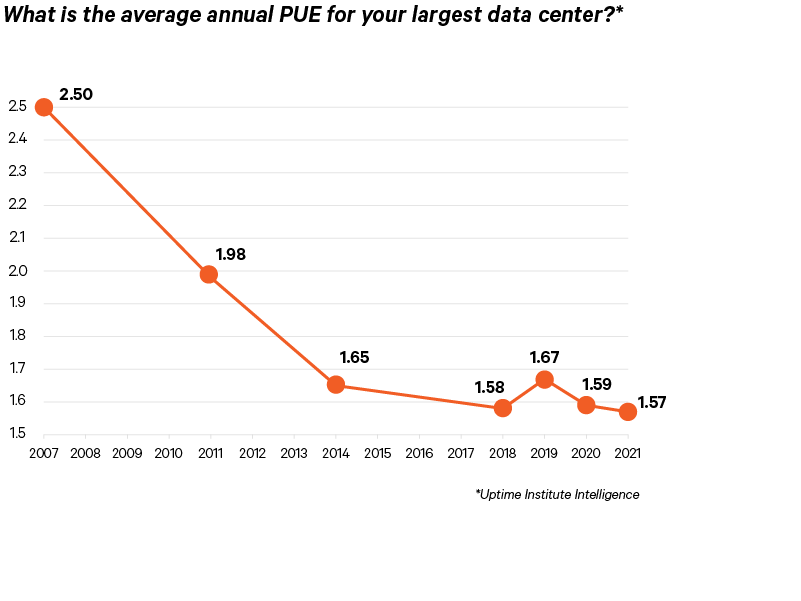
Source: Data centre energy efficiency ‘flatlines,’ says Uptime Institute
Thermal management systems are generally the largest contributor to PUE and there are several energy and water-efficient thermal technologies available today that can help operators drive down PUE for existing data centers and ensure low PUE for new data centers. As more organizations have adopted these systems, they have begun to turn their attention to squeezing out inefficiencies in the critical power system.
Currently, renewable energy isn’t predictable enough to directly power always-on data centers. Fluctuations and dropouts as short as 30 milliseconds can harm IT equipment and trigger outages. This is being addressed by pairing renewable energy sources with systems capable of producing hydrogen from renewable sources. The hydrogen is then used by fuel cells that can power the data center during periods when renewable sources are not delivering the required power. These technologies are advancing, but there is a need for more progress before many operators will feel comfortable deploying them.
As the technologies advance, operators have adopted other tactics to participate in renewable energy. There are physical power purchasing agreements (PPAs), where participants purchase renewable energy directly from the grid they use. There are virtual PPAs, where participants use a contract to pay a renewable energy project for power that is sold in another market and receive credit for that renewable energy. Operators can also use Renewable Energy Certificates (RECs), which are market instruments that provide a streamlined way to buy and sell renewable energy in a verifiable manner.
Organizations that have relied on water-intensive cooling technologies to reduce their PUE now have other options that can deliver similar energy savings while reducing or eliminating water consumption. Water usage effectiveness (WUE) can be used to measure data center water efficiency and is calculated by dividing the amount of water a site uses for cooling, regulating humidity, and producing electricity by its total IT equipment energy usage. Particularly in areas where water is scarce, water consumption can be a business continuity as well as environmental issue, and there is a particularly strong incentive to reduce WUE in these areas.
Data center servers generate heat that can be captured for reuse. Nordic countries reused waste heat for district energy use. In the United States, California is mandating waste heat recovery for data centers via Title 24, and other states could follow suit. Liquid cooling technologies can be effective in supporting heat reuse because the chilled water loop used by these systems can transfer energy 10 times more efficiently than air.
Data center operators are partnering with electronics recycling companies to maximize recycling of the materials in electronic components and ensuring all e-waste is disposed of responsibly. They’re also reusing, repurposing, and reselling used devices. Online guides can provide help on how to reduce, recycle, and dispose of electrical and electronic equipment.
Data center owners and operators are in a strong position to drive change throughout the industry because they work with construction companies, IT system and infrastructure providers, utilities, service providers, and others. Data center owners and operators can issue mandates or offer partners preferred status for meeting certain targets. Manufacturers of IT and infrastructure systems can provide certified products and technologies that validate design, usage conditions, compliance, and whether components and materials can be recycled. Data center teams may also want to work with partners to adopt circular economy processes where used equipment is collected, refurbished, and reused, and waste is reprocessed into new materials.
There is no single solution to reducing a data center’s environmental impact. How organizations prioritize and address the many opportunities available to reduce impact will depend on goals, budgets, existing technologies and other factors.
Resources


